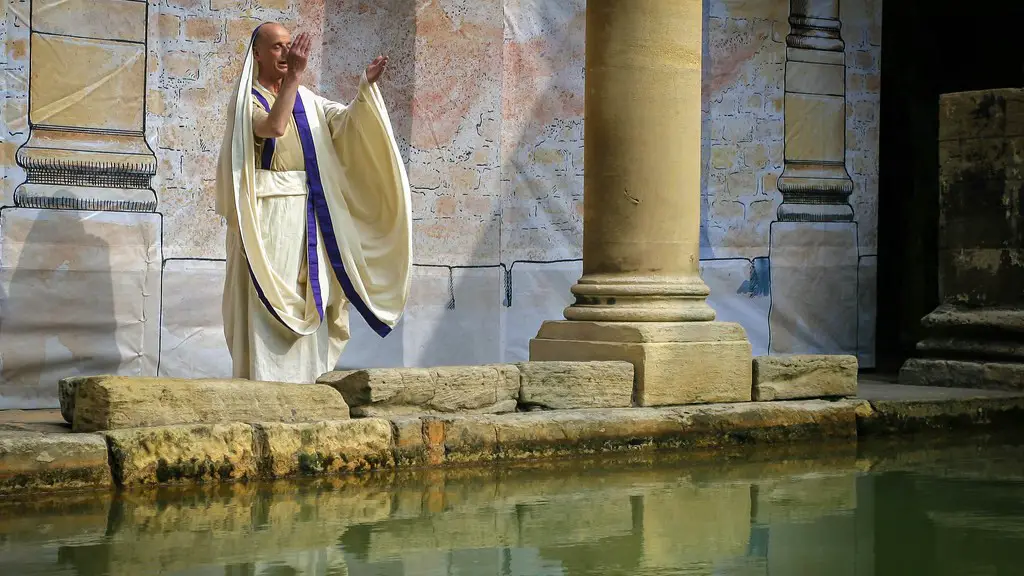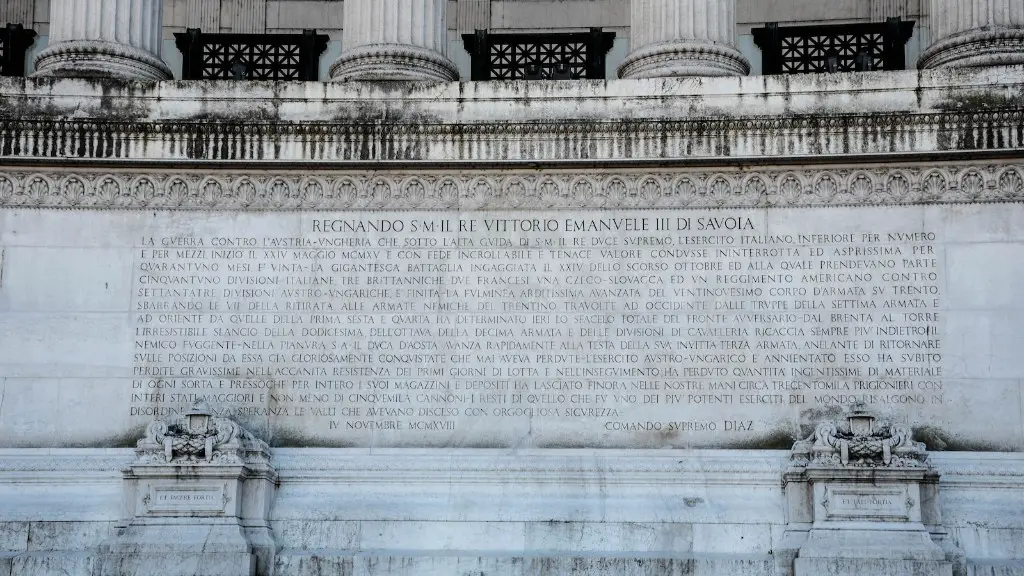In Ancient Rome, the family was the basic unit of Roman society. The family was organized around the father, who was the head of the household. The father had complete control over his wife and children, and could even reject a child that was born to him. The father was also responsible for the education of his children, and for their religious and moral development. The father’s power over his family was absolute, and it was not until the father died that the children could gain their independence.
In ancient Rome, the concept of the family was different from what it is today. The word “family” referred to not only a group of people who were related by blood, but also to a group of people who were related by marriage or adoption. The head of the family was known as the “paterfamilias,” and he had complete control over the lives of the people in his family. The paterfamilias was responsible for the religious life of the family, and he also had the power to reject a newborn baby.
How was the ancient Roman family structured?
The father was the head of the ancient Roman family. All members of the family were descended from the father and were under his authority. The father had the power to make decisions for the family and to discipline his children.
For the Romans, family was the most important thing. The whole family would live together in one house or apartment. This included all unmarried sons and daughters, as well as married sons and their wives. Married daughters went to live with their husband’s family.
What are some facts about Roman families
The Pater Familias was the oldest male figure in a Roman family and was responsible for the household. The family would live together in one house or apartment and the Pater Familias would be the head of the household. He could be a grandfather, father, elder brother, or uncle.
It is interesting to note that the Romans raised their children at home, and that the wife, sons with wives and children, unmarried daughters and slaves all lived in the household. Girls and boys who belonged to the upper classes were educated, and boys’ childhood was considered to be over at the age of 16. This is a far cry from the childhoods we see today, where children are often raised by their grandparents or in daycare centers. It is clear that the Roman family structure was very different from our own, but it is fascinating to see how they managed to make it work for them.
What age did Roman children go to school?
The first type of school was for younger children aged up to 11 or 12. At these schools, children learned to read and write and to do basic mathematics. For writing, they used a stylus and a wax tablet.
The Orsini family is one of the oldest and most powerful families in Rome. They can trace their origins back to a certain Ursus de Paro, who was recorded in Rome in 998. The family has been influential for centuries, and their power is still felt today.
What was daily life like in a Roman family?
The wealthy class of ancient Rome enjoyed a lifestyle that most people today could only dream of. They had access to the best clothes, furniture, and food, and were waited on hand and foot by servants and slaves. Many of them held lavish dinner parties where they would serve their guests exotic dishes from all over the world. For the average Roman, however, this kind of lifestyle was nothing more than a pipe dream.
Most Roman families had a lot of children, because so many of the kids died young. The average Roman family had five or six kids, but only two or three of them lived to grow up. This meant that families had to keep having children until they had at least two that survived to adulthood.
How did the Romans treat their babies
Once the baby was born, the midwife would cut the umbilical cord, remove the placenta, and then they would decide if the child was worth keeping. Once declared fit to live, as a Roman ritual, the midwife would place the child on the ground for the head of the household to then raise up and claim it to rear.
Roman legal sources indicate that women could not marry before the age of 12. This was likely due to the fact that women were not considered to be fully adult at this age, and thus were not able to make such a commitment.
What did Roman families do for fun?
In the past, riding horses, hunting, and fishing were popular activities in the country. Today, many people still enjoy these activities. Board games such as dice, checkers, and tic-tac-toe are also popular.
The Roman Empire had a very different view on the age of consent for marriage than we do today. The age of lawful consent for girls was only 12, while for boys it was 14. This was largely due to the fact that women were seen as property of their father or husband and were not given the same rights as men. Noble women were expected to marry younger than those of the lower classes and be virgins until their first marriage. This was seen as a way to preserve their families’ honor and status. While the age of consent may have been different, most Roman women still married in their late teens to early twenties.
What did Romans call their children
The praenomen was the first part of a Roman name. This was a personal name and was the closest thing that the Romans had to the first names we have today. A child would be officially given their praenomen at a purification ceremony known as a Lustratio.
The class structure in ancient Rome was very formal and official with records kept of each class. Wealth was often not enough to move up through the classes. There were three basic divisions in Roman society: citizens, noncitizens and slaves.
The Roman class system was very strict and rigid. There were several social classes that Romans could belong to, and in most cases, individuals were born into their specific class. The main classes were Senator, Equestrian, Patrician, Plebeian, Slave, and Free. In some cases, wealth or family status determined which class an individual belonged to. The class system was an important part of Roman society and played a large role in how people interacted with each other.
It is clear that, for the Romans, life was hard enough without having to take care of a disabled or imperfect child. This is why they would often abandon newborns who had any sort of birth defect or damage. This was likely seen as the best solution for both the child and the parents, as it would allow the child to be taken care of by someone who could better handle their needs and freed the parents from the burden of having to care for them.
What age did a Roman boy become a man
This is referring to a boy’s coming of age, or when he is considered a man. This generally happens when he is physically mature and his father decides it is time, but it can be anywhere between the ages of 14 and 17.
The Roman matron was the ideal woman according to Rome’s legal and social code. She was a wife and mother who ran the household and provided for her family. She was also expected to be modest in her dress and behavior.
Conclusion
There is no single answer to this question as families in ancient Rome were organized in a variety of ways, depending on factors such as social class, religion, and regional traditions. However, some common features of Roman family life included the patriarch (the father or oldest male head of the household) exercising authority over all other members of the family, the wife and children having a lower legal and social status than the husband and father, and the extended family (including grandparents, aunts, uncles, and cousins) living in close proximity to one another.
In ancient Rome, families were organized around the father, who had complete control over the family. The father was the head of the household and made all the decisions for the family. The father also had the right to expell any member of the family from the household. The family was made up of the father, the mother, the children, and the slaves. The father controlled the slaves and decided what work they would do. The father also decided when the family would move. The father was the most important member of the family and had the most power.





